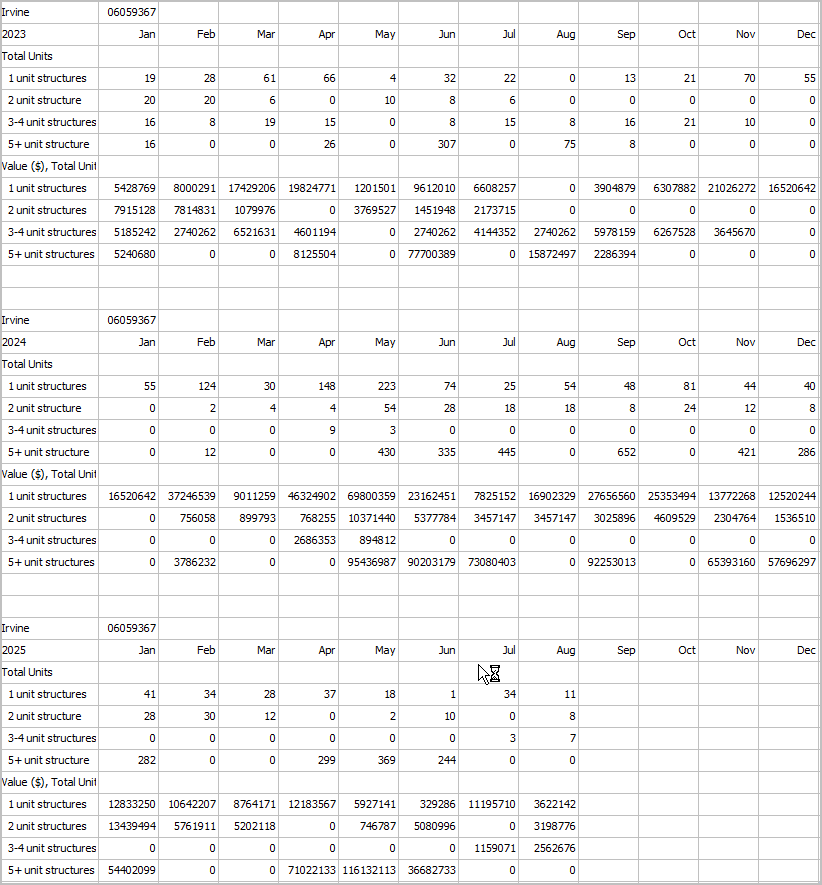

|
|
.. monthly, year-to-date, annual time series data .. city, county, metro, state, national .. tools & data to examine housing growth; new residential construction .. the number of total housing units changed from 131,704,730 (Census 2010) to 140,498,736 (Census 2020) .. a change of 8.8 million units (6.7%). And to 146,740,964 (American Community Survey 2024 1 year). Contributing the change each month are the New Authorized Residential Construction data. Leading Economic Indicator New Authorized Residential Construction data are a leading economic indicator. An increase in the number of building permits can signal the start or increase in economic activity. These data are important to businesses, governments, policy-makers and stakeholders - how, where and when is housing changing; how are residential markets changing? Building permits data are tabulated by thousands of cities, counties and metros across the country. Many permit issuing places tabulate these data monthly, others report the data annually. These data can provide a continuous measure of the health of a city, county, region and characteristics of the housing market. County and Place Time Series Data The county and place building permits time series database is updated monthly. There is only a one month lag between the data reference date (e.g., August 2025) and the date of availability (e.g., September 2025. Data include the number of units, buildings and valuation for single family, 2-unit, 3-4 unit and 5 or more unit structures. The data are integrated into a database with other wide-ranging data including Census 2010, Census 2020, and annual housing characteristics. New Authorized Residential Construction -- tabular view  Join us in the weekly web sessions training and support sessions. Learn about using the housing related data and a wider array of demographic-economic data for many types of geography. Support Using these Resources [goto top] Learn more about demographic economic data and related analytical tools. Join us in a Data Analytics Lab session. There is no fee for these Web sessions. Each informal session is focused on a specific topic. The open structure also provides for Q&A and discussion of application issues of interest to participants. ProximityOne User Group [goto top] Join the ProximityOne User Group to keep up-to-date with new developments relating to geographic-demographic-economic decision-making information resources. Receive updates and access to tools and resources available only to members. Use this form to join the User Group. Additional Information ProximityOne develops geodemographic-economic data and analytical tools and helps organizations knit together and use diverse data in a decision-making and analytical framework. We develop custom demographic/economic estimates and projections, develop geographic and geocoded address files, and assist with impact and geospatial analyses. Wide-ranging organizations use our tools (software, data, methodologies) to analyze their own data integrated with other data. Contact us (888-364-7656) with questions about data covered in this section or to discuss custom estimates, projections or analyses for your areas of interest. |
|
|